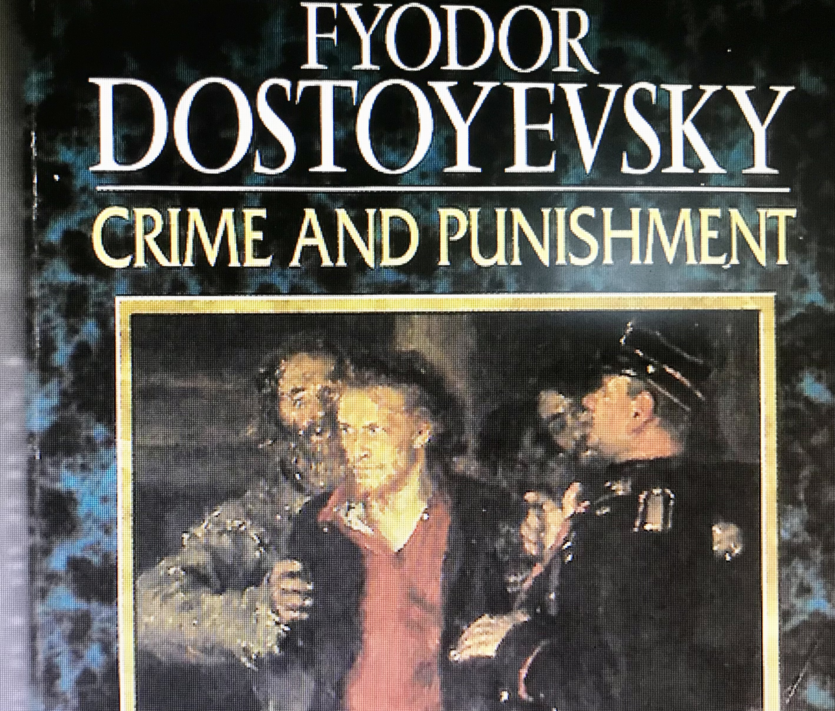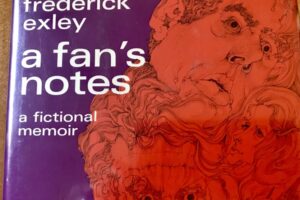READING OFF THE BEATEN PATH
My wife has read every James Patterson, Thomas Harris, and Lee Child book ever written. Yet she’s never read CRIME AND PUNISHMENT, by Fyodor Dostoyevsky. Her reasons? It’s too long; probably too old fashion; too dense; too boring. Small font in a thick paperback is scary. It’s too ‘Russian’.
I’m sure this is the common perception for this book. If this sounds like you or anyone you know, all I can say is this: avoid CRIME AND PUNISHMENT no longer! Read this book. I promise, it will forever be a magical event in your reading life!
The premise is revealed quickly, as all the ‘action’ takes place in the very first chapter. The main character is a poor and unsettled student named Raskolnikov who sells his last possessions to a scummy old pawn-broker, then circles back and murders her with an axe. This climactic scene hits the reader within the first 30 pages. After that there are no chase scenes, no gun fights, no cloak-and-dagger twists. But I can tell you, the ‘action’ or real turmoil is only beginning.
Raskolnikov’s state-of-mind is clear to us throughout the book. While he’s depicted as grungy and lazy, he thinks he’s smart. He justifies his act by believing he’s intellectually enlightened, and his higher intellect fully entitles him to cull out the lesser lives in society. In his mind, by killing the worthless old woman, he’s doing everyone a favor.
Following the murder scene, CRIME AND PUNISHMENT turns into an unparalleled psychological thriller. It’s a study of one man’s desperation, mental chaos, and internal angst. In incredible detail, it takes us deeper and deeper into one man’s self-nullification, his feverish struggle with guilt, ruin, withdrawal, and alienation. Among other things, Raskolnikov is the embodiment of paranoia. This is a matchless dive into the horrific consequences of an action.
PUNISHMENT is considered one of the greatest books ever written. Here are just a few reasons why.
It introduces the Great Russian Literary Theme: Suffering.
It was published in 1866, in the same (serialized) publication and edition as WAR AND PEACE. But while Tolstoy and so many others wrote about royalty, parlors, ballrooms, princes, generals, and lavish parties, Dostoyevsky was different. He wrote about the seedy underbelly of society: the bars, drunks, gamblers, street-urchins, the hopeless, the destitute and detached. While Tolstoy wrote about the fulfilling joys of nature and the countryside, Dostoyevsky describes how the urban world could crush a soul. The settings are grim, and as such, this is an extraordinarily different look at Russian society. One of the great achievements of CRIME AND PUNISHMENT is the way Dostoyevsky’s art dissolves high culture.
PUNISHMENT is the original detective novel. We’re introduced to the first detective or investigator in literature, Porfidy Petrovich. He’s steadily suspicious in a Columbo-esque way. And while no hard evidence exists with which to accuse or convict Raskolnikov, Petrovich pushes ahead, steady and relentless, with a fascinating psychological demeanor all his own. He brings tension, heightens the paranoia, pushes Raskolnikov’s buttons. He’s original.
Every psycho-thriller ever written stands on the foundation of PUNISHMENT. Every detective story owes gratitude to Dostoyevsky. Grunge-artists harken back to his groundbreaking description of outsiders.
Again, this is a page turner. It’s an astonishingly detailed study of one man, circling the proverbial drain.




